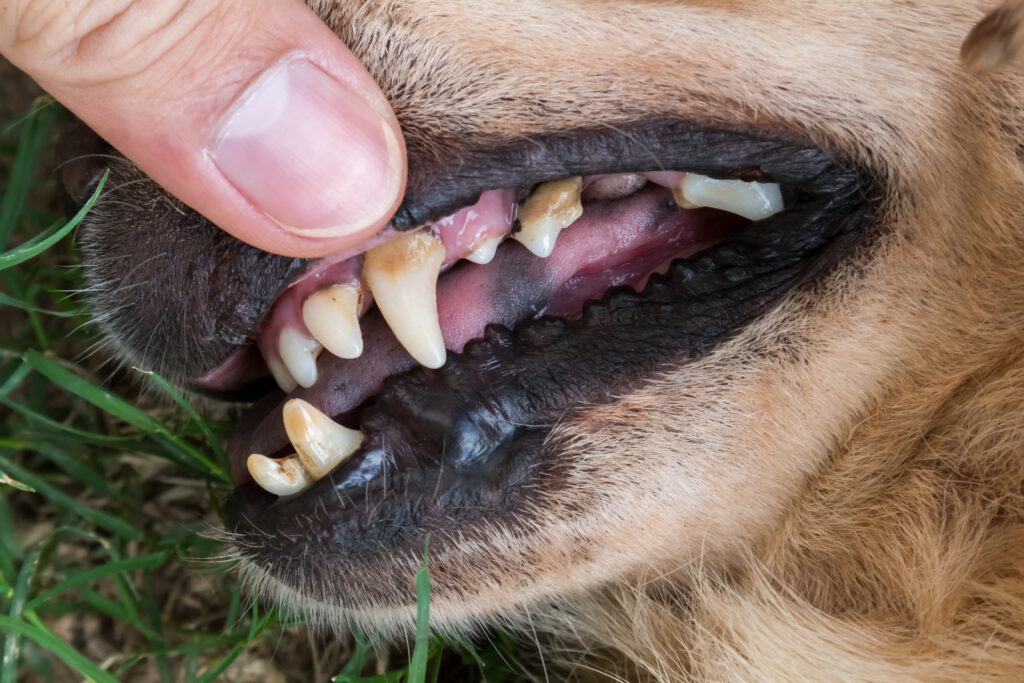Taking care of our beloved dogs involves more than just feeding them and taking them for walks. It also includes paying close attention to their dental health. Dog tooth decay stages can be subtle, but understanding them is key to maintaining your dog’s overall health and happiness. In this blog, we’ll explore the stages of tooth decay in dogs, its impact on their health, and how to prevent and address these issues. For personalized advice and professional care, remember that Chino Valley Animal Hospital in Chino Valley, AZ is always here to help. Give us a call at (928) 636-4382 for guidance or to schedule an appointment.
The Stages of Tooth Decay in Dogs
Plaque Buildup and Early Decay
The first stage in dog tooth decay is the buildup of plaque. Plaque is a film of bacteria that forms on the teeth when food particles and saliva mix. Over time, this plaque can harden into tartar, leading to the first signs of tooth decay. At this stage, you might notice your dog’s teeth looking discolored or see a buildup around the gum line.
Gingivitis and Progressing Decay
As the decay progresses, it can lead to gingivitis, which is inflammation of the gums. This stage is characterized by red, swollen gums that may bleed easily. Your dog may also start showing signs of discomfort while eating.
Periodontitis and Advanced Decay
If gingivitis is left untreated, it can progress to periodontitis, a more serious stage where the supporting structures of the teeth are affected. This can lead to tooth loss, abscesses, and severe pain for your dog.
The Impact of Tooth Decay on Overall Health
The condition of a dog’s teeth is more than just a matter of dental health; it has far-reaching effects on their overall well-being. When tooth decay is left unchecked, it doesn’t just lead to pain and discomfort in the mouth. The bacteria from the decayed areas can enter the bloodstream and spread throughout the body. This can lead to a range of systemic issues that affect major organs and overall health.
Effects on Major Organs
One of the more severe consequences of untreated dental issues is the potential impact on a dog’s vital organs. The bacteria from the mouth can travel and lodge in organs like the heart, liver, and kidneys. This can contribute to diseases such as endocarditis (an infection of the heart’s inner lining), liver disease, and kidney infections. These conditions can be serious and may require extensive medical treatment.
Impact on the Immune System and Overall Health
Tooth decay and gum disease in dogs can also take a toll on their immune system. The body has to fight the ongoing infection in the mouth, which can weaken its ability to respond to other health issues. Dogs with chronic dental problems may become more susceptible to other infections, have a reduced ability to recover from illnesses, and generally have a lower quality of life.
Behavioral Changes and Quality of Life
Beyond physical health, dental problems can lead to changes in behavior. A dog in pain may become irritable or less active. They may lose interest in playing, have difficulty eating, and exhibit a decrease in overall happiness and quality of life. This can be distressing not only for the dog but also for the family who loves them.
Early Detection and Intervention
This underscores the importance of early detection and intervention. Regular dog dental check-ups can help identify problems before they become severe. Addressing dental issues promptly not only saves the dog from pain and discomfort but also protects their overall health and well-being. By taking care of your dog’s teeth, you’re contributing to their overall health and happiness.
Signs to Seek Professional Veterinary Care
It’s essential to know when to seek professional help for your dog’s dental health. Some signs to look out for include:
- Bad breath that’s more than just “dog breath”
- Difficulty eating or loss of appetite
- Pawing at the mouth or visible discomfort
- Swollen, bleeding gums
- Loose or missing teeth
- Changes in behavior, such as increased irritability
The Importance of Professional Dental Care
Regular dental check-ups and professional cleanings are vital in preventing and treating tooth decay in dogs. These appointments allow veterinarians to remove plaque and tartar buildup that can’t be addressed with regular brushing alone. In some cases, more advanced treatments may be necessary, such as dental x-rays, extractions, or other interventions to address severe dental issues.
Preventing Tooth Decay in Dogs
- Daily Dental Hygiene Practices: Preventing tooth decay in dogs starts at home. Regular tooth brushing with dog-specific toothpaste, providing dental chews, and ensuring a healthy diet all contribute to better dental health.
- Choosing the Right Products: Selecting the right dental care products is crucial. Look for chews and toys that are specifically designed to reduce plaque and tartar buildup.
- Professional Advice and Regular Check-ups: Regular veterinary check-ups are essential in catching and addressing dental issues early. During these visits, your vet can provide personalized advice based on your dog’s specific needs.
At Chino Valley Animal Hospital, we understand the importance of your dog’s dental health and are committed to providing the best care possible. If you’re concerned about your dog’s dental health or it’s time for a check-up, don’t hesitate to call us at (928) 636-4382 or request an appointment online. Our team is dedicated to ensuring your dog’s teeth and gums stay healthy for a long and happy life.





